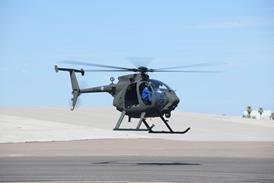Julian Moxon/LE Bourget
France is pushing on unilaterally with development of a next-generation family of supersonic attack missiles, despite serious doubts over Germany's commitment to the joint programme.
France has awarded Aerospatiale a Fr1 billion ($200 million) pre-development project, dubbed the VESTA, to demonstrate propulsion and sub-system technologies for the Franco-German Anti- Navaire Nouvelle Generation (ANNG) supersonic ramjet-powered anti-ship missile.
The VESTA initiative was launched at the Euronaval '96 show at Le Bourget, Paris, on 22 October, and is intended to produce the airframe/propulsion baseline for a family of standoff weapons. The first of these will be the ANNG, a replacement for the Exocet and Kormoran anti-ship missiles.
The ANNG is the latest iteration of Franco-German attempts, begun in the early 1980s, to develop a supersonic anti-ship missile.
German involvement in the Vesta is limited to just DM17 million ($11 million), mainly for concept validation and installation work. The current memorandum of understanding for the ANNG calls for full go-ahead in 1998 and service entry in 2005, with provision for a 50% German stake.
"The Government remains very committed to this programme," says Peter Niethammer ANNG/Kormoran programme chief for Daimler-Benz Aerospace (DASA) missiles subsidiary LFK. He admits, however, that "it is true to say that the current climate for German defence spending is unstable, to say the least".
The ANNG project could still provide a basis for the faltering industrial tie-up between Aerospatiale and LFK. In the wake of the Matra-British Aerospace missile merger, and the decision that Matra's parent, Lagardere, will be the new owner of Thomson-CSF, DASA is understood to be reviewing its strategy.
Three Vesta launches will be carried out, all from the ground, the first in 2001, with two more the following year. The results will feed into the ANNG development effort, which will see five ship-borne launches. The ANNG missile is 5.8m long, with a diameter of 350mm. The missile will have a range of 185-370km (100-200nm), at Mach 3.
Surface-ship and air-launched variants are envisaged. The missile will have inertial navigation and active-radar seeker and the warhead of the Exocet Mk 2.
Source: Flight International























